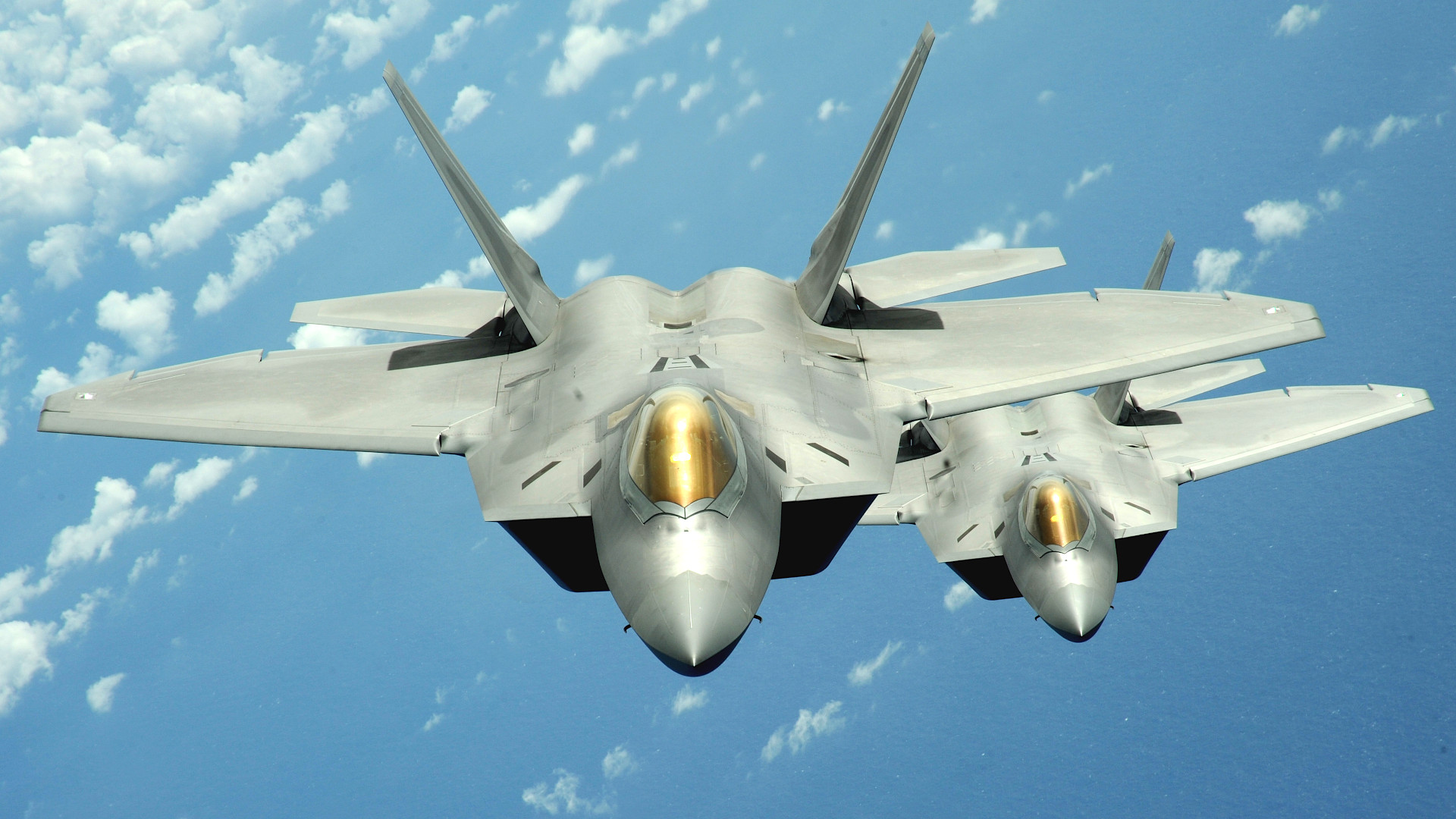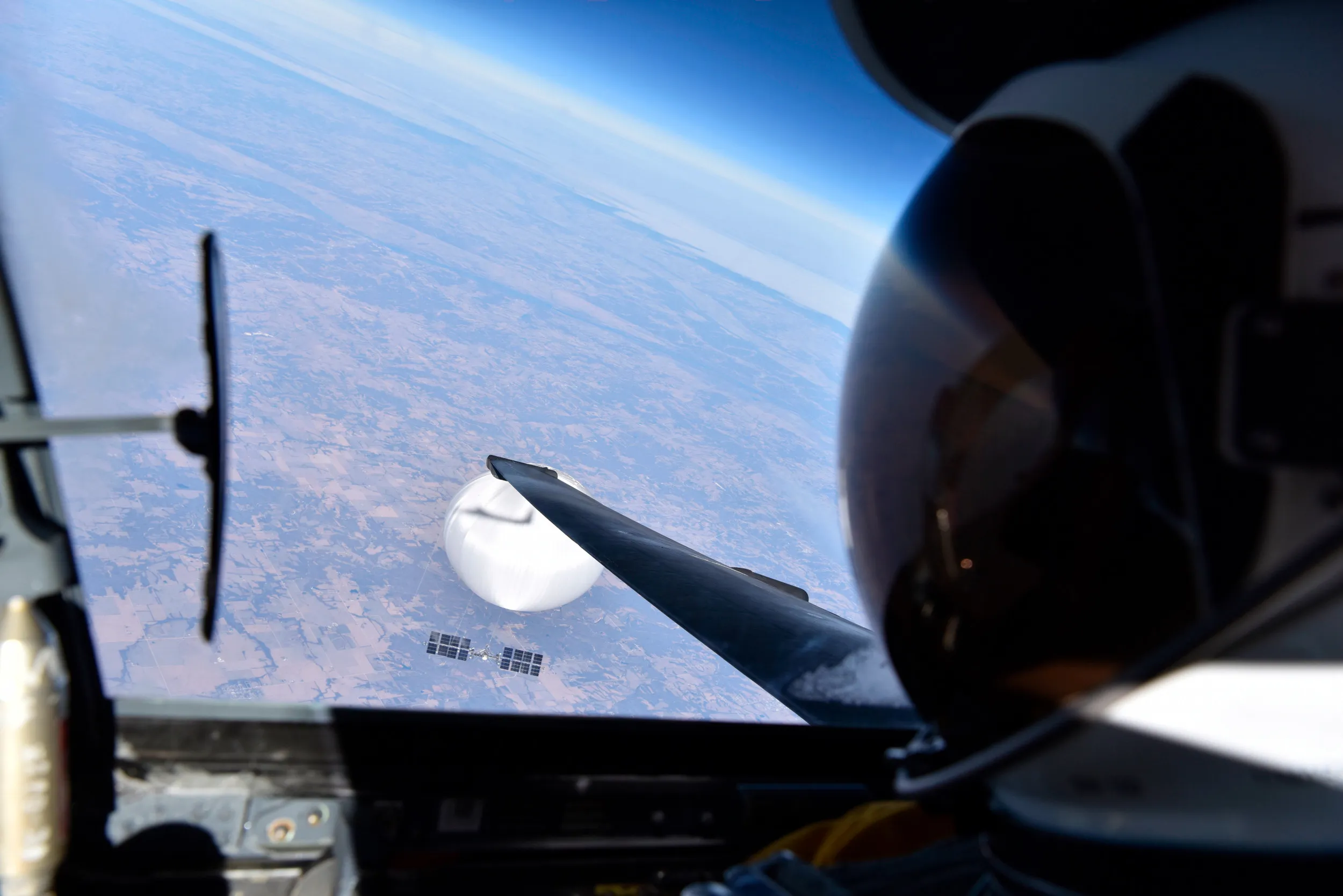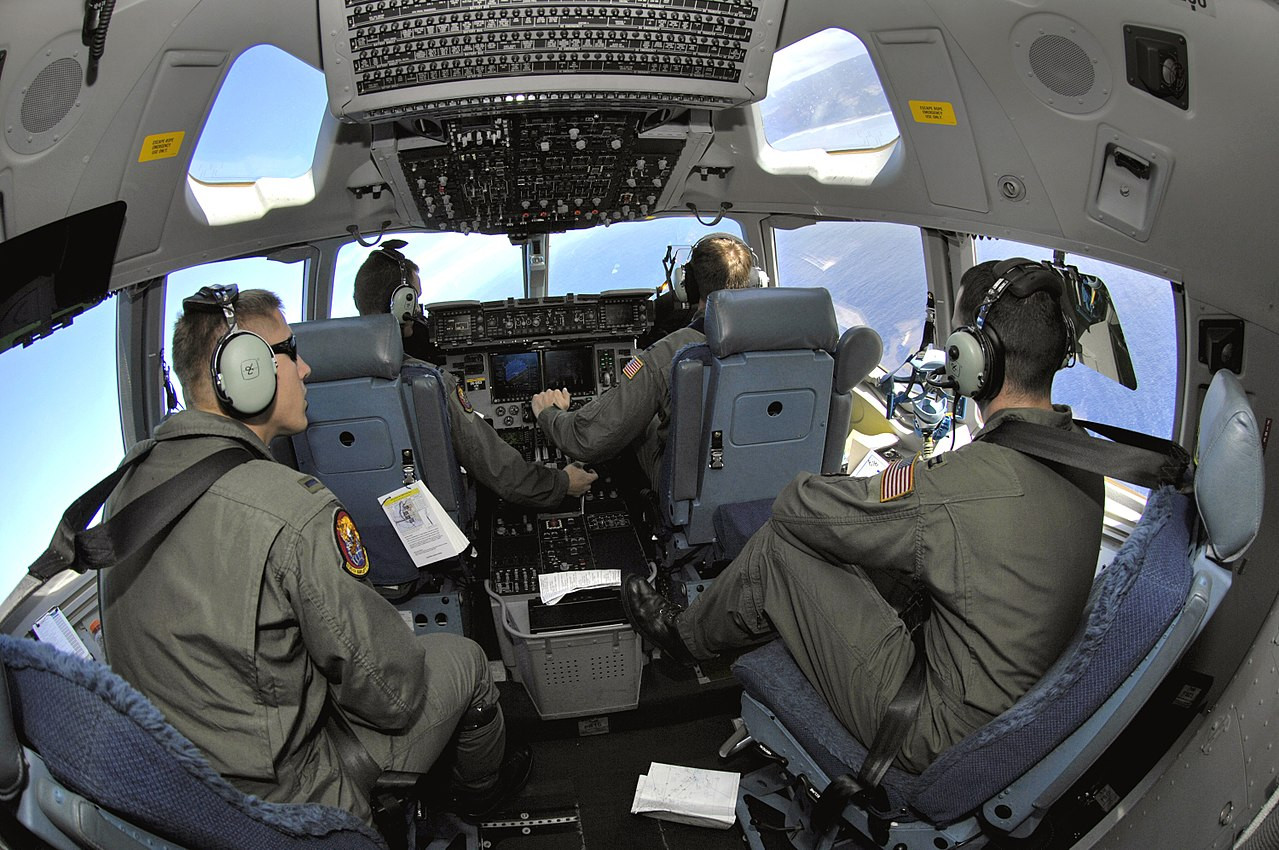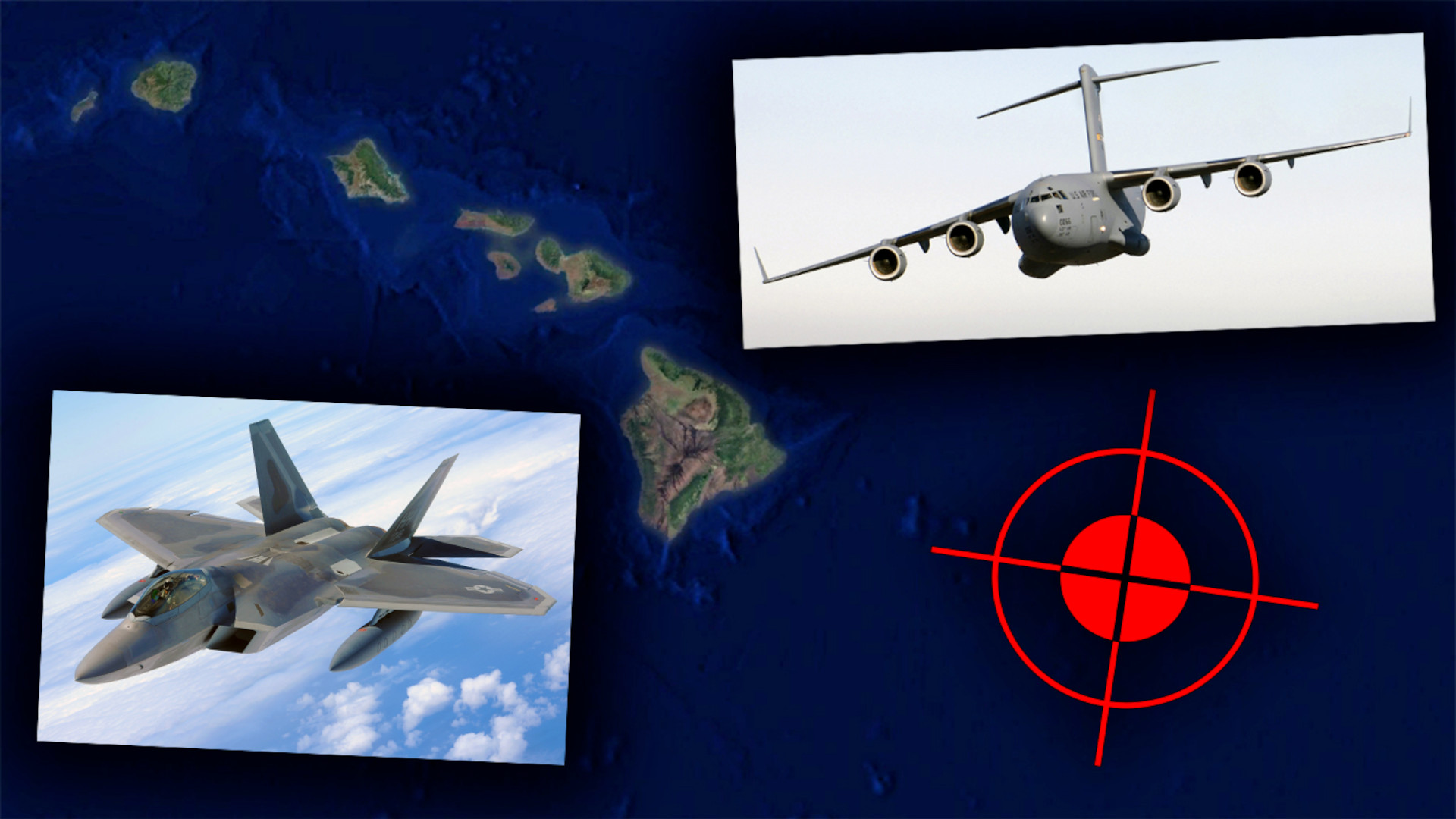The U.S. Air Force sent a trio of F-22 Raptor stealth fighters to intercept what was eventually assessed to be a balloon of unknown origin off the Hawaiian Islands last week. The U.S. military and the Federal Aviation Administration are continuing to track it in the Eastern Pacific. The Pentagon says it does not know who the owner of this balloon is, but that they do not believe it is “controlled by a foreign or adversarial actor” and added that it has not been assessed to pose a threat.
U.S. Indo-Pacific Command (INDOPACOM) confirmed the intercept and provided additional details about this recent balloon incident to The War Zone today. We had seen indications that something was brewing off of Hawaii last Friday and had reached out to Pacific Air Forces (PACAF), the top Air Force command in the region, and INDOPACOM at the time.
“U.S. Indo-Pacific Command responded to an unidentified radar signature Friday in the vicinity of the island of Hawaii. Pacific Air Forces launched three F-22s to assess the situation and visually identified a spherical object,” a spokesperson for INDOPACOM told The War Zone in a statement. “We monitored the transit of the object and assessed that it posed no threat. As a part of our normal daily operations, we closely track all vessels and aircraft in the Indo-Pacific area of operations through a combination of joint capabilities to protect the U.S. homeland, support our Allies and partners and secure a free and open Indo-Pacific.”

Separately, the Office of the Secretary of Defense (OSD) confirmed various details about this balloon incident to The War Zone.
“The Department of Defense and the Federal Aviation Administration (FAA) detected and observed April 28th an unmanned, balloon off the coast of Hawaii, floating at approximately 36,000 feet,” a Department of Defense spokesperson told The War Zone in a statement. “Ownership of the balloon is unknown, but there is no indication that it was maneuvering or being controlled by a foreign or adversarial actor.”

“The balloon did not transit directly over defense critical infrastructure or other U.S. Government sensitive sites, nor did it pose a military or physical threat to people on the ground. Although it was flying at an altitude used by civil aviation, it posed no threat to civil aviation over Hawaii,” they continued. “Based on these observations, the Secretary of Defense concurred with the recommendation of his military commanders that no action need be taken against the balloon. The balloon is now out of Hawaii’s airspace and territorial waters. We will continue to track the balloon with the FAA.”
NBC News had been the first to report on this incident today, citing anonymous U.S. government officials. That outlet reported that the balloon currently appears to be heading on an easterly course toward Mexico.
This all comes around three months after the Federal Aviation Administration told pilots to be on the lookout for a possible balloon soaring at altitudes between 40,000 and 50,000 feet hundreds of miles to the east of Hawaii.
This also follows the disclosure in February by American authorities that they were tracking what they assessed to be a Chinese spy balloon passing through U.S. and Canadian airspace. A U.S. Air Force F-22 subsequently shot that balloon down on February 4 off the coast of South Carolina. By the end of the following week, Air Force fighters had brought down three more still-unidentified objects that had been detected in the skies over the United States and Canada.

Though many details about this latest balloon incident in Hawaii still remain unknown, the first indications that a situation like this was developing had already begun to emerge online last Friday. The open source intelligence Twitter account @IntelWalrus shared a message apparently sent through the Aircraft Communications, Addressing and Reporting System (ACARS) from the U.S. Air Force’s 613th Air Operations Center at Joint Base Pearl Harbor-Hickam in Hawaii to a C-17A Globemaster III cargo plane, serial number 01-0187 and using the callsign Reach 572 at the time.
“SIR THIS IS TE 613 AOC AND WE HAVE A CURRENT SITUATION BREWING HERE SOUTH EAST OF THE BIG ISLAND AND LEADERSHIP IS ASKING IF YOU HAVE PHOTO TAKING CAPABILITY,” the message read. “Big Island” is a common way of talking about the actual island of Hawaii within the larger Hawaiian Islands chain.
Online flight-tracking software showed 01-0187 arriving at Travis Air Force Base in California on a flight from Joint Base Lewis-McChord in Washington State. That aircraft was then observed departing and heading out toward Hawaii. That aircraft was then tracked flying over the Big Island. It eventually returned to Joint Base Lewis-McChord.
Though not a surveillance platform by design, the C-17A does have significant range and good visibility for multiple crew members from the cockpit and other locations on the aircraft. If the balloon soaring past Hawaii was indeed at around 36,000 feet, the Globemaster III could have been able to see it and even document it, but it’s no easy task considering the speed of the C-17 and a slow-flying balloon-like object. The C-17A also has a robust communications suite that could, depending on the configuration, allow its crew to rapidly share images and video of the balloon taken from cellphones.

In comparison, in the case of the Chinese spy balloon in February, the extremely high altitudes that it was flying at demanded that the Air Force send U-2S Dragon Lady spy planes to monitor it, as well as collect information about it.
Details about the F-22s involved in the balloon chase, which were supported by at least one KC-135 tanker, had also begun to appear online over the weekend.
“Yesterday morning I was flying with a student pilot. Not long after we took off from Hilo, the Departure Controller called us and the other aircraft near Hilo to tell us that the [sic] Honolulu Control Facility had just told them that there was a military operation over the Big Island and all civilian aircraft were to remain off shore until further notice,” Scott Wilson, a flight instructor at Aloha Skies Aviation in Hawaii, wrote in a public post on Facebook on April 29. “About 20 minutes later an F-22 declared an emergency and was given landing instructions. … The controller never repeated back what the emergency problem was so I don’t know what it was.
“After the F-22 landed, they were told to continue toward the airport,” he added. “Then a second F-22 declared an emergency for low fuel (per what the controller repeated back to the F-22 pilot that we could hear on VHF) and everyone had to hold again.”
The Hawaii Air National Guard’s 154th Wing has F-22s that sit alert at Joint Base Pearl Harbor-Hickam in support of the homeland defense mission.
The 154th’s F-22s, again with a supporting KC-135, are known to have been scrambled in response to another mysterious high-altitude balloon spotted off the northern coast of the Hawaiian island of Kauai last year near a sensitive U.S. missile defense test site. The U.S. government, to date, has not confirmed whether or not that particular balloon was tied to China’s high-altitude surveillance program.
The Pentagon has also confirmed to The War Zone that the detection and tracking of this latest balloon had involved the application of unspecified “newly-established parameters for monitoring U.S. airspace.”
In February, President Joe Biden announced a number of policy and procedural changes in the wake of the various intrusions into U.S. and Canadian airspace that month. The included changing how the U.S. government, as a whole, would respond to unidentified objects entering American airspace, as well as other actions to help get a better sense of what is happening in the skies over the country, as you can read more about here.
Air Force Gen. Glen VanHerck, the head of NORAD and U.S. Northern Command (NORTHCOM), had told The War Zone and other outlets at a press conference earlier that month that the Chinese spy balloon, specifically, highlighted what he called a “domain awareness gap.” In response to that incident, the U.S. military made a number of more immediate changes, including to how various air defense radars functioned in order to be better able to detect and track such objects.
Why those changes were only made at that time when the threat of such aerial surveillance balloons had apparently already been well established remains largely unexplained. The War Zone has been reporting for years on the related topic of how many reported sightings of so-called unidentified aerial phenomena (UAP), previously known commonly as unidentified flying objects (UFO), are very likely balloons and other lighter-than-air craft, as well as drones, which foreign countries are operating to gather intelligence and for other malign purposes.
Whatever this new object being tracked around Hawaii does or doesn’t turn out to be in the end, we do now know that new policies and procedures are being employed to respond to the appearance of such objects in American skies.
Contact the author: joe@thedrive.com
